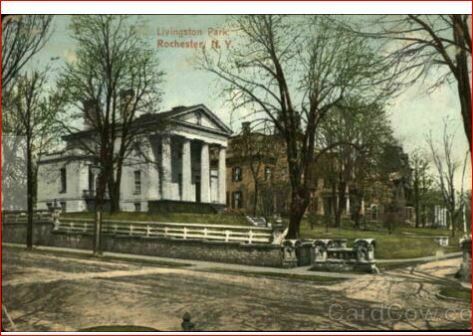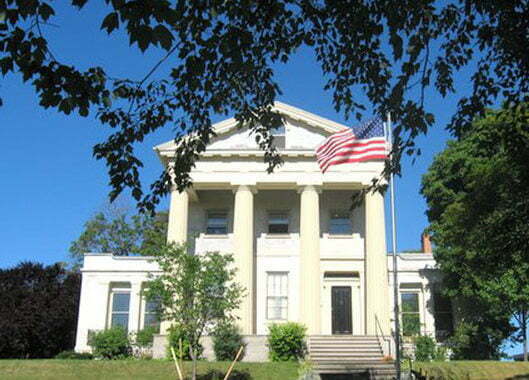As you stand at the corner of Troup Street and Livingston Park, it is hard to imagine that Troup Street was a small foot trail used by the Indigenous tribes to travel east and west. You probably cannot see beyond the large parking lot and ice rink and envision ten large gothic homes in a grove of trees surrounded by a fashionable three-foot-tall ornamental stone wall.

The homes in the Park were owned by young professional men who found wealth in milling, banking, and speculative ventures. It was bustling with business acquaintances, social events, and family. The hired help lived in residential quarters in the back of the house, and the deliveries were from small alleys behind the homes and through the kitchen area.

At one time, a third of the population of Rochester lived in the Third Ward, Corn Hill. While there were large homes on South Fitzhugh, Atkinson, and Adams, the mansions in the Livingston Park cluster were impressive.

Livingston Park was named after James K. Livingston, who, in 1827, built his home on the right side corner of Troup. Fortune came and went, and Livingston sold the house in 1835 to James Strong, who sold it three years later to Frederick Backus. For three-quarters of the century, the home was converted into a fashionable girls’ school, the Livingston Park Seminary. In the 1970s, the house needed a great deal of repair. However, a wealthy benefactor dismantled the home, and The Livingston-Backus home was disassembled, moved, and reassembled at the Genesee Country Village and Museum.

The only structure remaining is Hervey Ely’s Greek Revival home. Mr. Ely made his fortune by running a general store, a sawmill, and the Red Mill gristmill. Hervey Ely and his wife Caroline lived in this gracious mansion on Livingston Park, the social heart of the Third Ward. Mr. Ely planted many trees along the street. People came to the Park to walk among the shade trees, and from downtown tall office buildings, all you could see of Corn Hill were the trees and church spires.

The Elys lived in the home for only four years. After the collapse of the grain market in 1841, Ely was forced to sell the house to pay off his debts. In 1920, the Irondequoit Chapter of the Daughters of the American Revolution purchased the Ely home as their Chapter House. One of the early members of this Chapter was Susan B. Anthony.
Like Livingston Park, the Third Ward also saw many changes. In 1950, there were 750 homes built before 1910, and by 1975, only 250 were left. Corn Hill has seen many changes but has remained a viable neighborhood, with only a fond memory of what was once Livingston Park.
